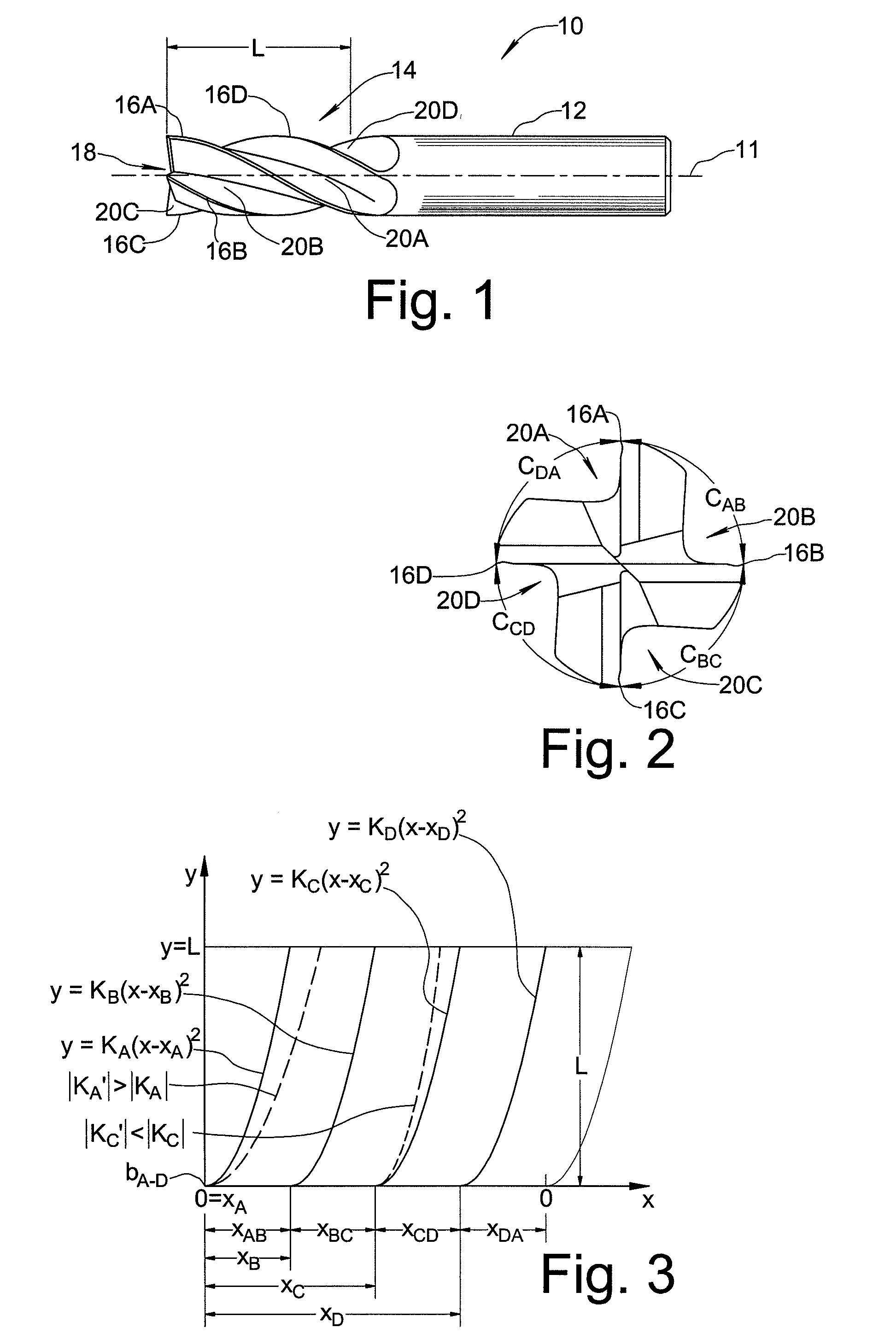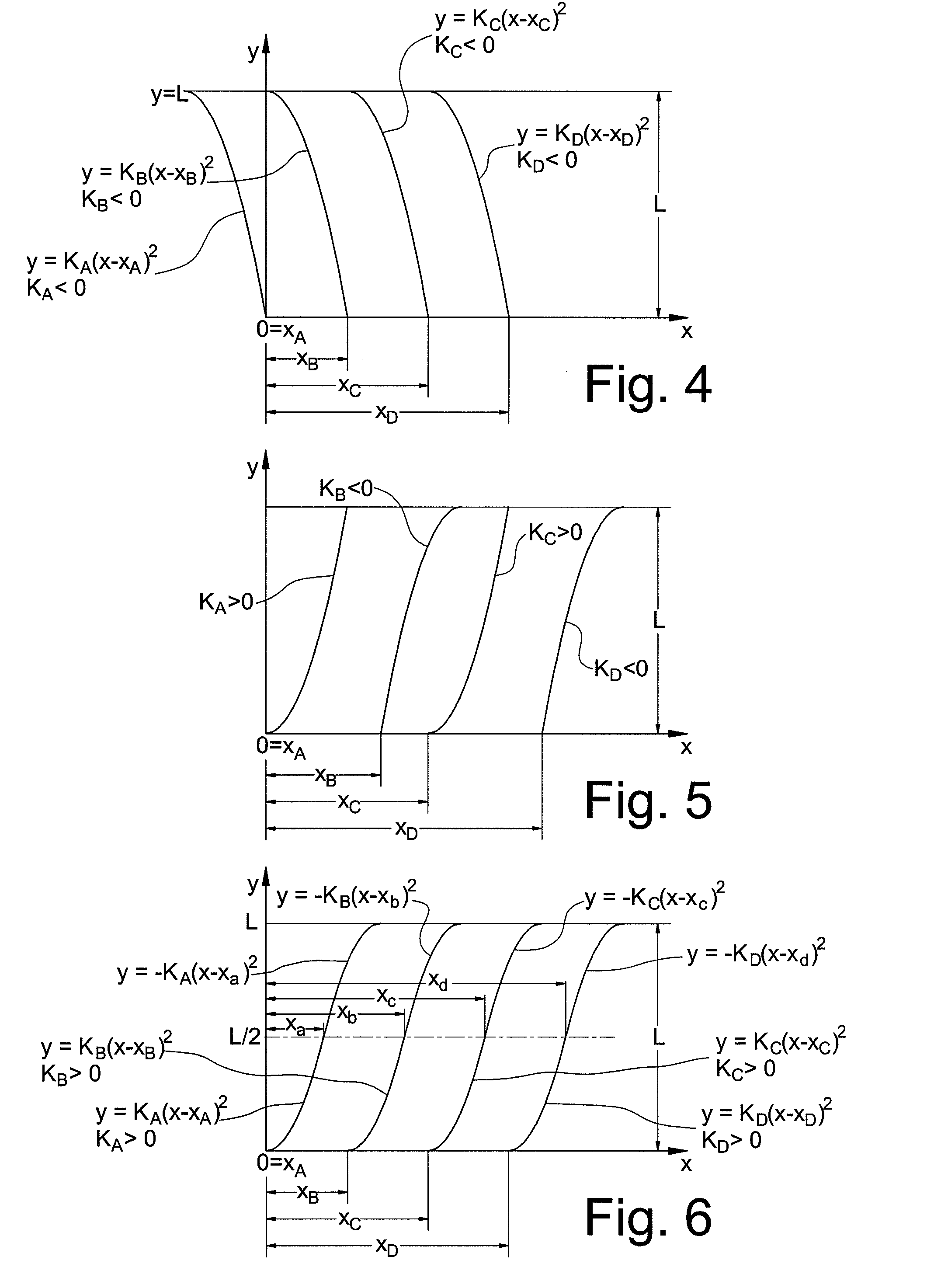Fluted Rotary Cutting Tool
a technology end mills, which is applied in the field of rotary cutting tools, can solve the problems of undesirable occurrence, poor tool performance in terms of life expectancy and workpiece quality, and considerable performance decay
- Summary
- Abstract
- Description
- Claims
- Application Information
AI Technical Summary
Benefits of technology
Problems solved by technology
Method used
Image
Examples
first embodiment
[0032]FIG. 3 is a schematic development view providing a two-dimensional representation of cutting edges 16A-16D in accordance with the present invention. The two-dimensional representation may be thought of as a plot that would result from inking each cutting edge 16A-16D and rolling end mill 10 along a flat surface to leave a mark where each cutting edge contacts the flat surface. The X-axis represents the circumferential distance as end mill 10 is rotated about axis 11 from a starting position as shown in FIG. 2, while the Y-axis represents distance along the flute length starting at cutting end 18 and moving toward shank 12. In accordance with the present invention, cutting edges 16A-16D are formed such that they each present a quadratic curve when represented in a two-dimensional schematic development view. As may be understood, a helical cutting edge will present a single straight line segment characterized by a single helix angle in such a schematic development view, while a ...
second embodiment
[0036]FIG. 4 is a schematic development view similar to that of FIG. 3 illustrating a cutting tool formed in accordance with the present invention. The embodiment of FIG. 4 differs from that of FIG. 3 in that the scaling constants KA through KD are all negative values, such that the respective curves corresponding to cutting edges 16A-16D have a concave rather than convex shape when viewed along a positive y (axial) direction. Again, the circumferential index values and magnitudes of scaling constants KA through KD may be equal or may vary from cutting edge to cutting edge.
third embodiment
[0037]The schematic development view of FIG. 5 illustrates a third embodiment wherein at least one of the cutting edges has a positive scaling constant and at least one other of the cutting edges has a negative scaling constant. In particular, cutting edges 16A and 16C each have a positive cutting scaling constant (KA and KC, respectively), while cutting edges 16B and 16D each have a negative scaling constant (KB and KD, respectively). It is apparent from FIG. 5 that such an embodiment provides circumferential indexing between cutting edges that varies along effective flute length L.
[0038]FIG. 6 depicts a compound quadratic curve embodiment wherein each cutting edge is formed so as to present a pair of quadratic curve portions in schematic development view. In the axial range from cutting end 18 (y=0) to the mid-point of the effective flute length (y=L / 2), the cutting edges 16A-16D present parabolic curve portions in schematic development view according to the respective equations
y=...
PUM
 Login to View More
Login to View More Abstract
Description
Claims
Application Information
 Login to View More
Login to View More - R&D
- Intellectual Property
- Life Sciences
- Materials
- Tech Scout
- Unparalleled Data Quality
- Higher Quality Content
- 60% Fewer Hallucinations
Browse by: Latest US Patents, China's latest patents, Technical Efficacy Thesaurus, Application Domain, Technology Topic, Popular Technical Reports.
© 2025 PatSnap. All rights reserved.Legal|Privacy policy|Modern Slavery Act Transparency Statement|Sitemap|About US| Contact US: help@patsnap.com



